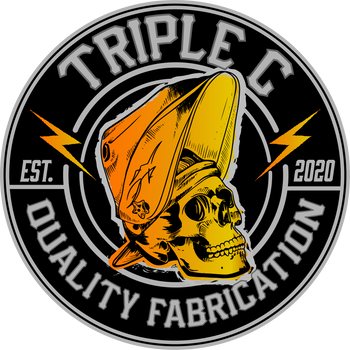Exploring the World of Metal Fabrication
Metal fabrication may sound technical, but it plays a vital role in everyday life. From the vehicles we drive to the electronics we use, countless items are products of metal fabrication processes. This comprehensive guide answers nine key questions about metal fabrication, offering insights into the significance of this industry.
1. What is Metal Fabrication?
Metal fabrication is the process of shaping and transforming raw metals into finished products. This may involve cutting, bending, assembling, or other techniques depending on the design requirements. Whether it’s the frame of your car or the computer on your desk, metal fabrication is essential in creating the objects that power modern life.
Why is Metal Fabrication Important?
Metal fabrication is foundational across industries such as agriculture, construction, transportation, and technology. From simple tools to complex machinery, metal fabrication shapes the structures and products that support daily activities and global industries.
History of Metal Fabrication
Metal fabrication dates back thousands of years. Civilizations throughout history used metals like copper, bronze, and iron to create tools, weapons, and structures. While early techniques were basic, modern metal fabrication is highly advanced, allowing for intricate and durable designs.
2. What are the Different Types of Metal Fabrication?
Metal fabrication is categorized into three main types:
- Industrial Metal Fabrication: Involves creating parts for tools, machinery, and industrial applications.
- Structural Metal Fabrication: Focuses on building components like frames for construction projects.
- Commercial Metal Fabrication: Involves producing metal components for consumer products such as cars and household appliances.
Each type serves specific needs, contributing to diverse industries globally.
3. What are the Main Types of Metal Fabrication Processes?
Metal fabrication involves various processes, including:
- Cutting and Notching: Dividing metal into specific shapes or cutting out sections.
- Bending: Used to shape pipes, bars, and sheet metal.
- Welding: Joining metal pieces through high-heat fusion.
- Machining: Removing excess metal using cutting tools.
- Casting: Pouring molten metal into molds to create specific shapes.
- Stamping, Punching, and Shearing: Techniques for molding, creating holes, or cutting metal sheets.
These processes allow for the precise creation of metal products tailored to specific industries.
4. What Technologies and Machinery Are Used in Metal Fabrication?
Metal fabrication has evolved from ancient forging techniques to the use of advanced machinery, including:
- CNC Technology: Computer-controlled machines that perform automated, precise fabrication.
- Lathes: Machines that shape metal symmetrically around an axis.
- Drilling Machines: Essential for creating holes in metal pieces.
- Tube and Pipe Benders: Used for bending metal into shapes for frames, furniture, and vehicle parts.
Advanced technologies like these enable fabricators to meet the demands of various industries with efficiency and precision.
5. What Are the Common Steps in a Metal Fabrication Project?
A typical metal fabrication project follows these key steps:
- Designing: Using CAD software to create 3D models of the desired product.
- Fabrication: Transforming raw materials through various processes such as cutting, bending, and welding.
- Finishing and Assembling: Smoothing, grinding, and joining parts to complete the final product.
Each step is crucial to ensuring that the final product meets industry standards and project specifications.
6. What Raw Materials Are Used in Metal Fabrication?
While numerous metals can be used, the most common materials include:
- Steel: Known for its strength and versatility, steel is used in construction, automotive, and aerospace industries.
- Aluminum: Lightweight and corrosion-resistant, ideal for aerospace and electronics.
- Magnesium: High strength and low density, perfect for lightweight applications like laptop bodies.
- Sheet Metal: Used in various industries for its malleability and versatility.
Choosing the right material is essential to ensuring the strength, durability, and functionality of the final product.
7. Which Industries Rely on Metal Fabrication?
Metal fabrication plays a critical role in industries such as:
- Aerospace: Creating components for aircraft and spacecraft.
- Automotive: Fabricating vehicle frames and other essential parts.
- Construction: Crafting structural elements like steel frames for buildings.
- Agriculture: Producing machinery, tools, and equipment for farming.
- Racing: Designing lightweight, high-performance parts for race cars.
- Military and Defense: Producing everything from small arms to aircraft.
These industries depend on skilled metal fabricators to produce reliable, high-quality products.
9. What Does the Future Hold for Metal Fabrication?
The metal fabrication industry continues to evolve with technological advancements. Future trends point to the use of specialized alloys with tailored properties for specific applications, as well as an increased focus on sustainable practices such as recycling.
As industries demand more customized and environmentally friendly solutions, metal fabrication will continue to innovate, remaining a cornerstone of modern manufacturing.
Conclusion: The Enduring Relevance of Metal Fabrication
Metal fabrication is more than just an industrial process; it’s an art and science that shapes the world around us. From ancient blacksmithing to modern CNC machining, the evolution of metal fabrication reflects human innovation. As we look to the future, this age-old craft will remain pivotal in creating the tools, machines, and structures that define our civilization.
By understanding the key aspects of metal fabrication, we gain a deeper appreciation for the expertise, craftsmanship, and technological advancements that go into producing the metal products that surround us every day.

